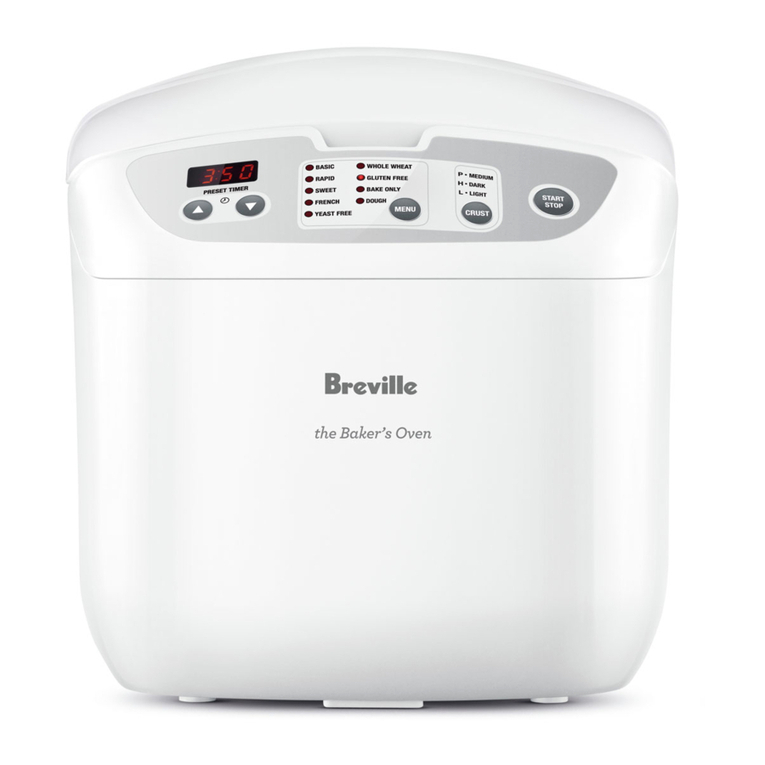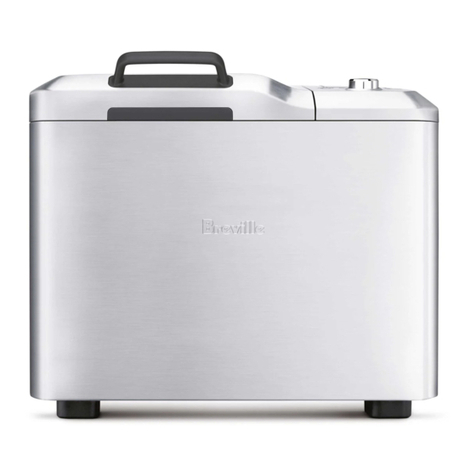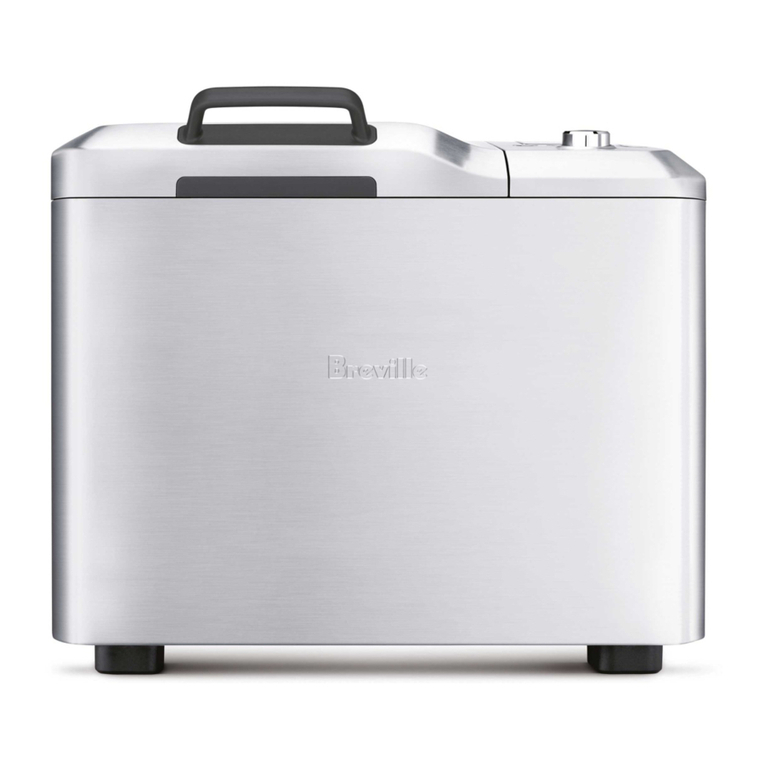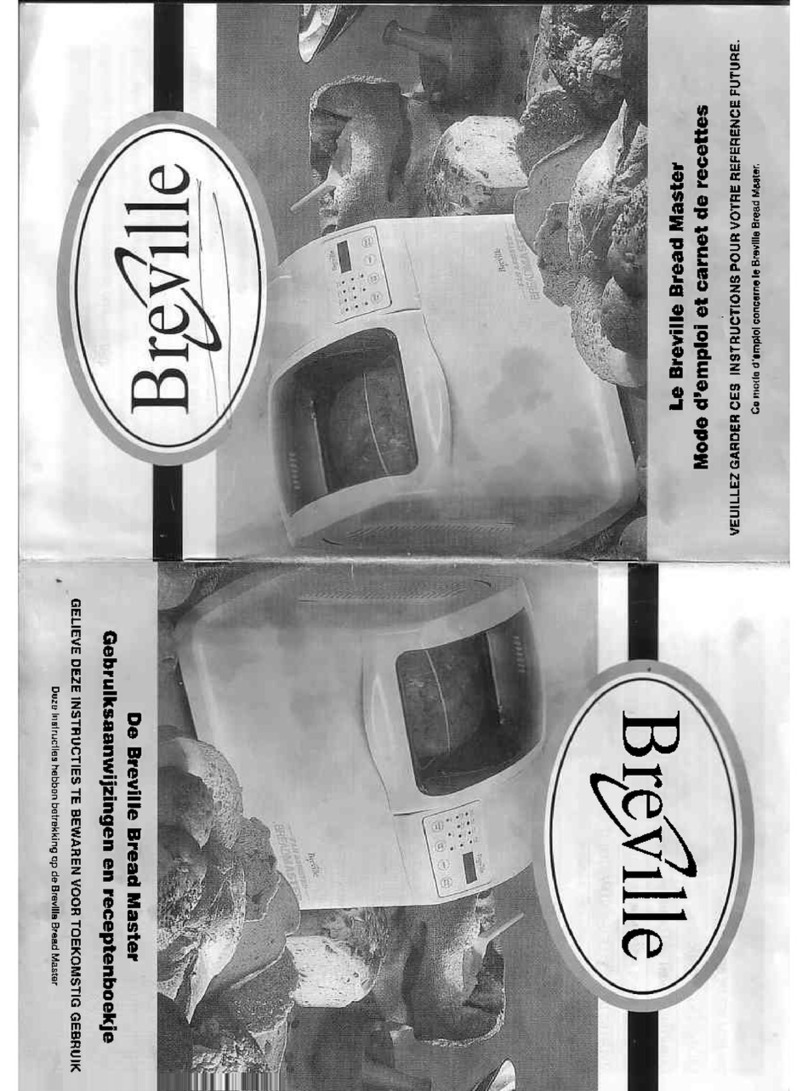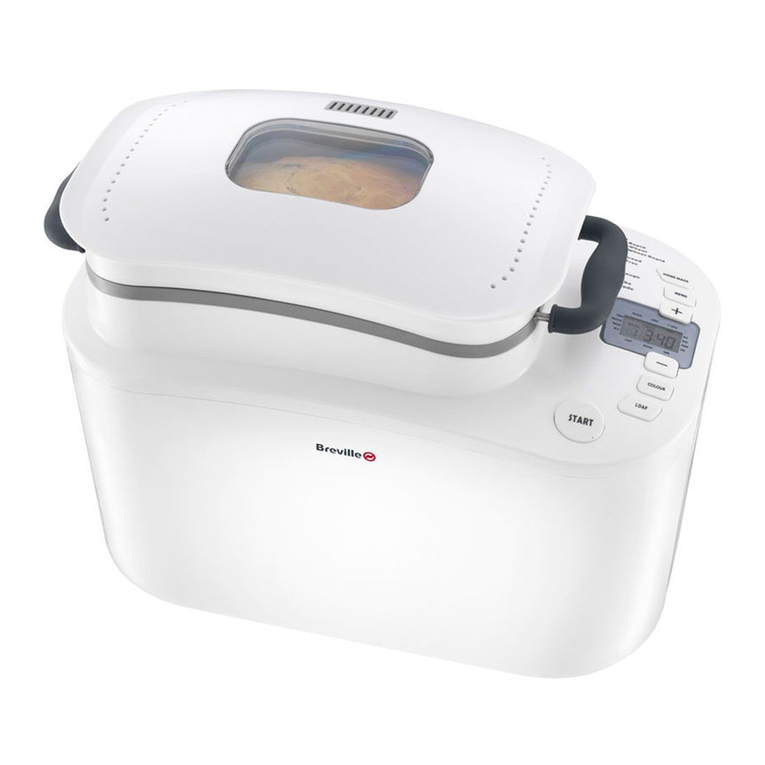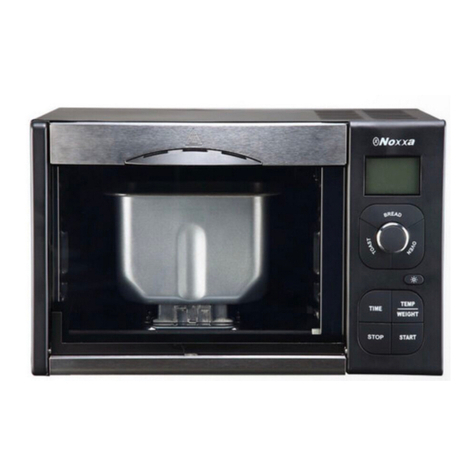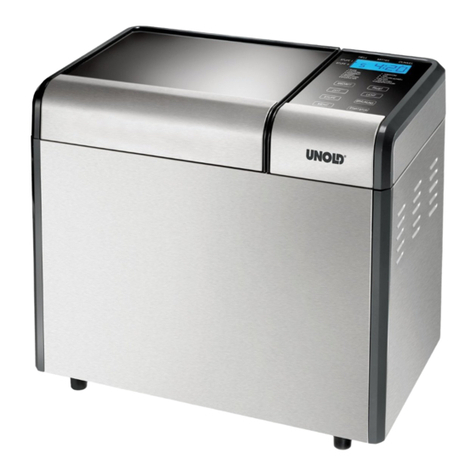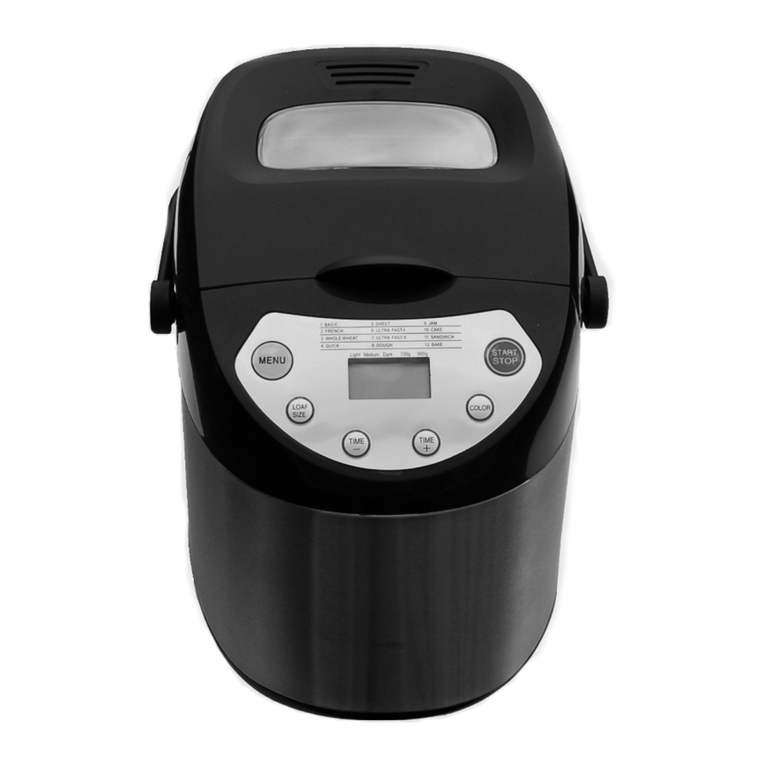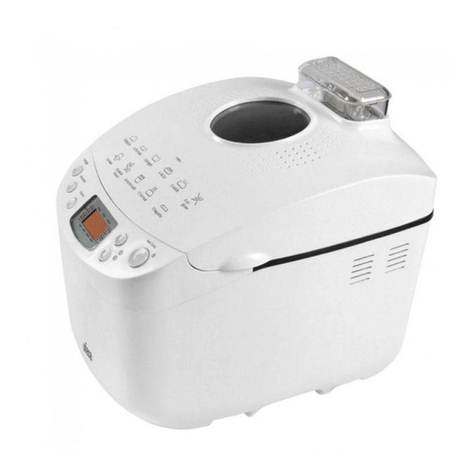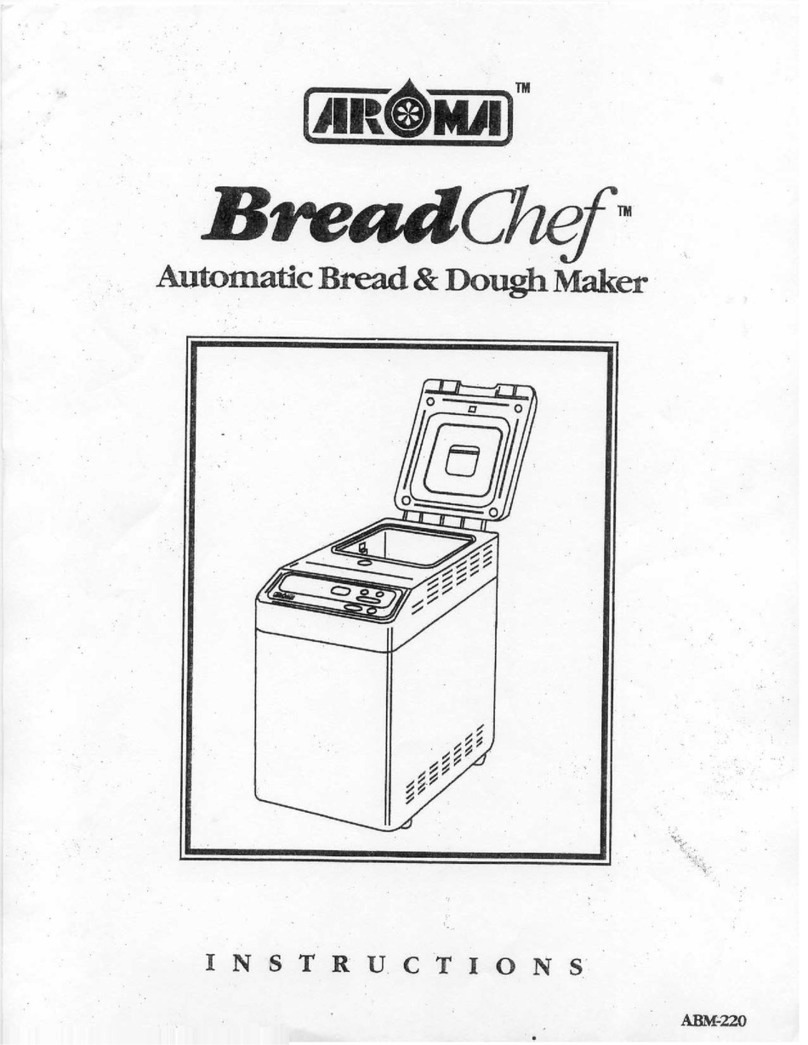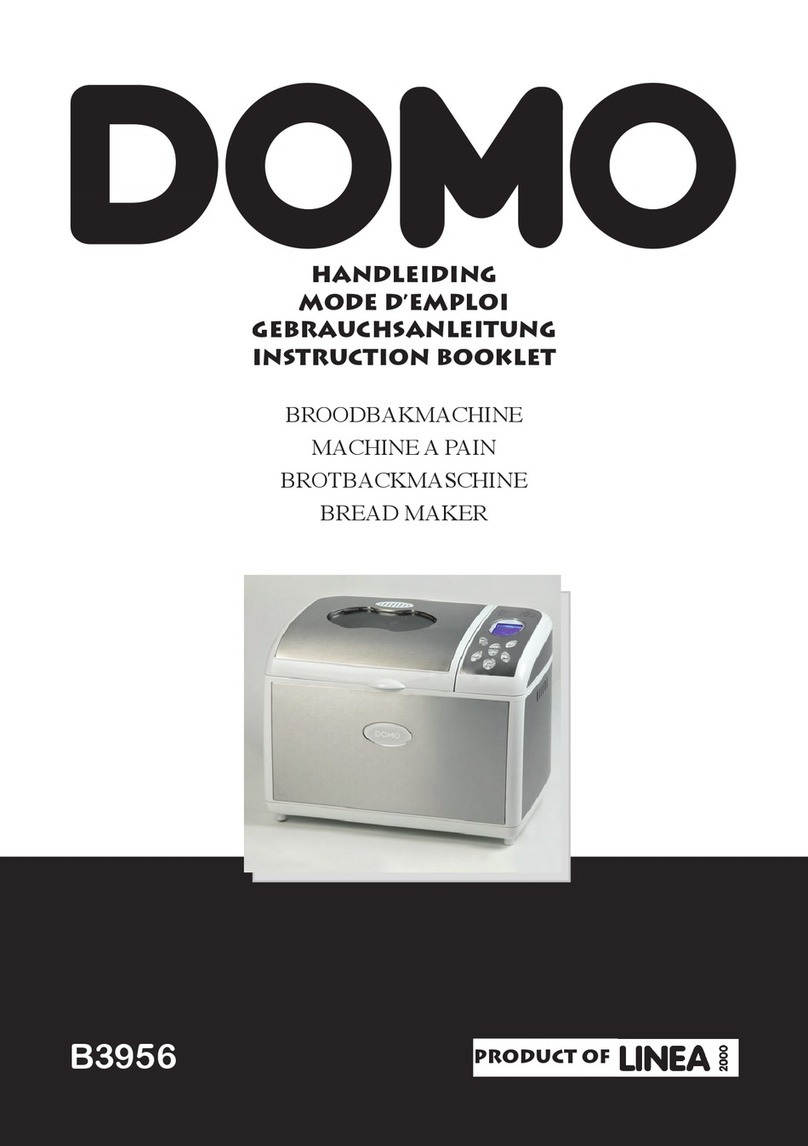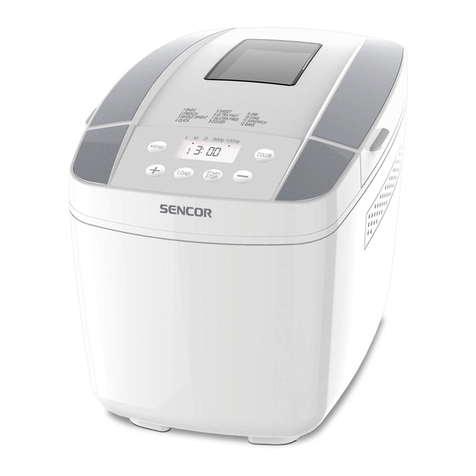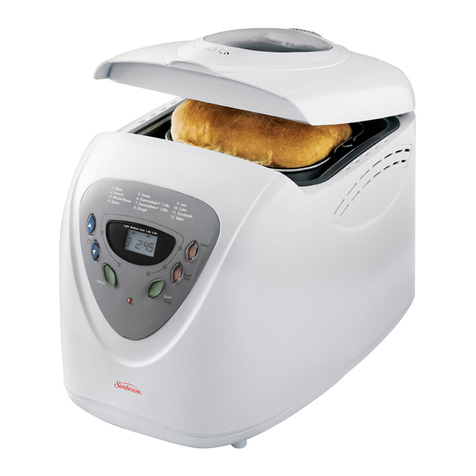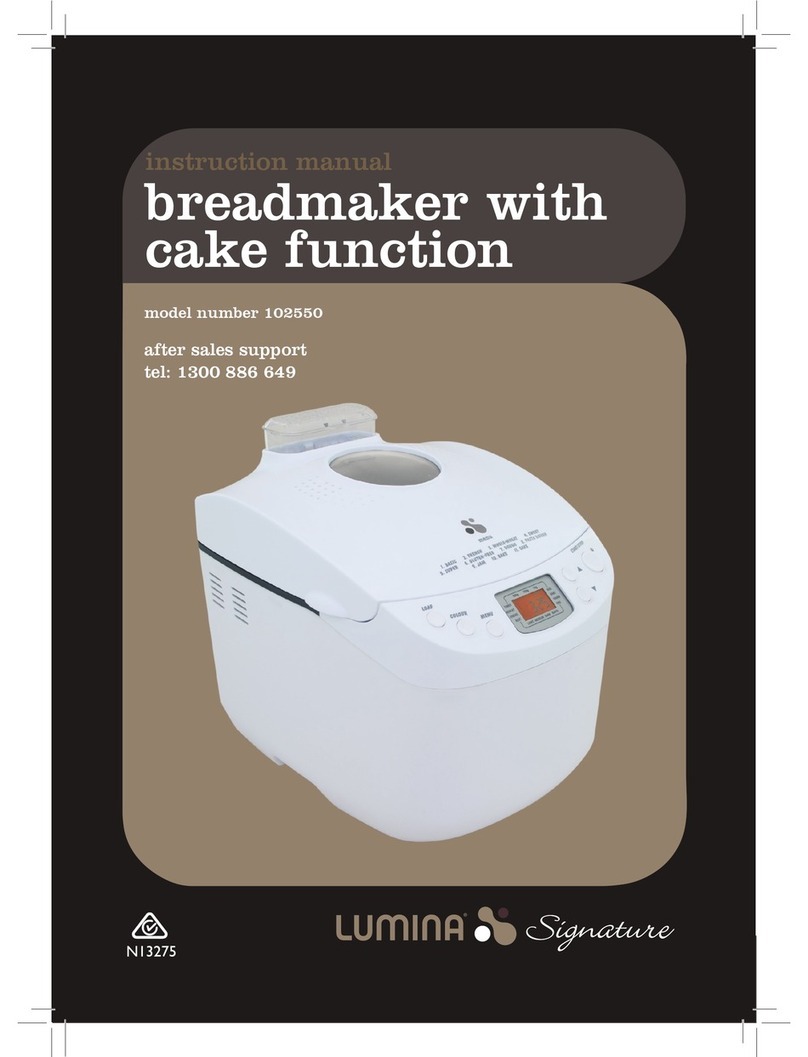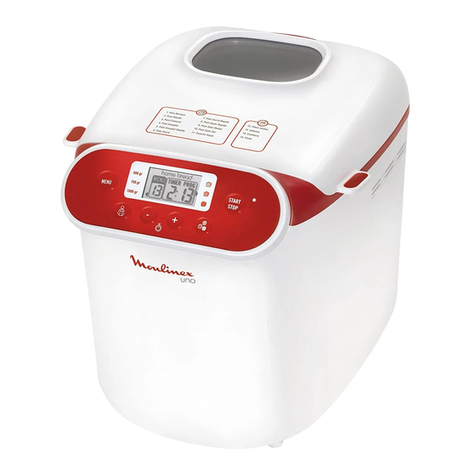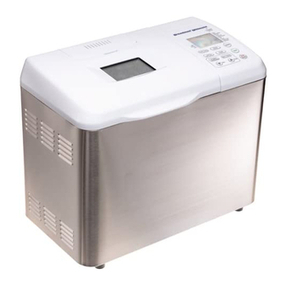
6
CONTROL PANEL MESSAGES
BREAD AND DOUGH SETTING SELECTIONS
Control Panel Messages - Error Detection
When the Start/Stop button has been pressed to begin the process and there is a problem relating
to the sensor, the machine will beep twice and then flash the particular error message specific to the
problem. If the error messages E:02-E:05, E:08 appear in the Display Window contact the Breville
customer service department. See back page for details.
Error Message Problem
If the bread machine is used
shortly after a previous loaf
has been baked, its interior will
still be warm, i.e. the sensor
temperature will still be above
40ºC.
Correction
Press Start/Stop to reset. Open
the lid and remove the bread
pan to cool. Always allow the
bread machine sufficient time
to cool before using again.
SETTING 1. Basic
Press the Select button once and the Display
Window will show ’1’ and a red light will appear
against 1Kg in the ‘Loaf Selection Panel’ and
against Medium in the ‘Crust Selection Panel’. This
setting is used for a large size white loaf with a
medium crust colour.
For a Dark or Light crust colour, press the Crust
button once for Dark, twice for Light.
For a 750g Medium size loaf, press the Loaf button
once and the red light aligns with this setting.
SETTING 2. Basic Rapid
Press the Select button twice and the Display
Window will show ‘2’ and a red light will appear
against 1Kg in the ‘Loaf Selection Panel’ and
against Medium in the ‘Crust Selection Panel’. This
setting is used for a large size, rapid baked white
loaf with a medium crust colour.
For a Dark or Light crust colour, press the Crust
button once for Dark, twice for Light.
For a 750g Medium size loaf, press the Loaf button
once until red light aligns with this setting.
SETTING 3. Wholewheat
Press the Select button three times and the Display
Window will show ‘3’ and a red light will appear
against 1Kg in the ‘Loaf Selection Panel’ and
against Medium in the ‘Crust Selection Panel’. This
setting is used for a large size, wholemeal loaf with
a medium crust colour.
For a Dark or Light crust colour, press the Crust
button once for Dark, twice for Light.
For a 750g Medium size loaf, press the Loaf button
once until red light aligns with this setting.
This setting is used for breads made with large
amounts of wholemeal flour, rye or other grain
flours.
A 30 minute warming period before the kneading
commences, allows the heavy wheat flour and
grains to absorb the liquid, soften and expand.
SETTING 4. Wholewheat Rapid
Press the Select button four times and the Display
Window will show ‘4’ and a red light will appear
against 1Kg in the ‘Loaf Selection Panel’ and
against Medium in the ‘Crust Selection Panel’.
This setting is used for a large size, rapid baked
wholemeal loaf with a medium crust colour.
For a Dark or Light crust colour, press the Crust
button once for Dark, twice for Light.
For a 750g Medium size loaf, press the Loaf button
once until red light aligns with this setting.
A 5 minute warming period before the kneading
commences, allows the heavy wheat flour and
grains to absorb the liquid, soften and expand.
SETTING 5. Sweet
Press the Select button five times and the Display
Window will show ‘5’ and a red light will appear
against 1Kg in the ‘Loaf Selection Panel’ and
against Medium in the ‘Crust Selection Panel’. This
setting is used for a large size sweet loaf with a
medium crust colour.
For a Dark or Light crust colour, press the Crust
button once for Dark or twice for Light.
For a 750g Medium size loaf, press the Loaf button
once until red light aligns with this setting.
This setting is suitable for sweeter style breads
as the rising times are longer and the baking
temperature is lower.
E:01


